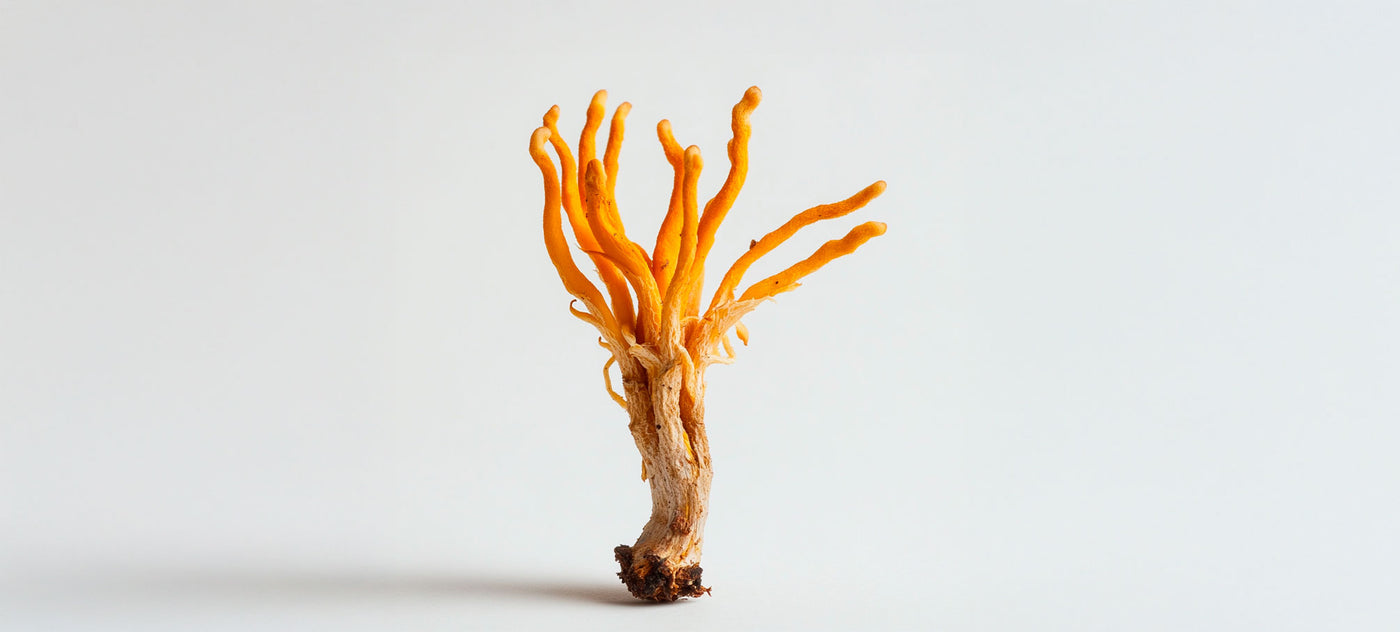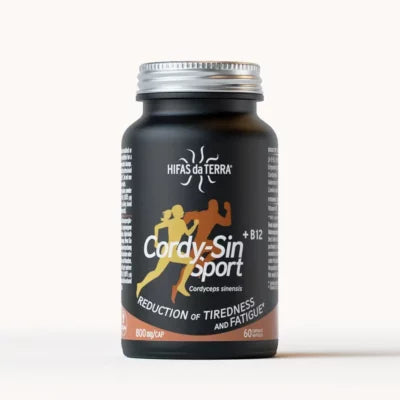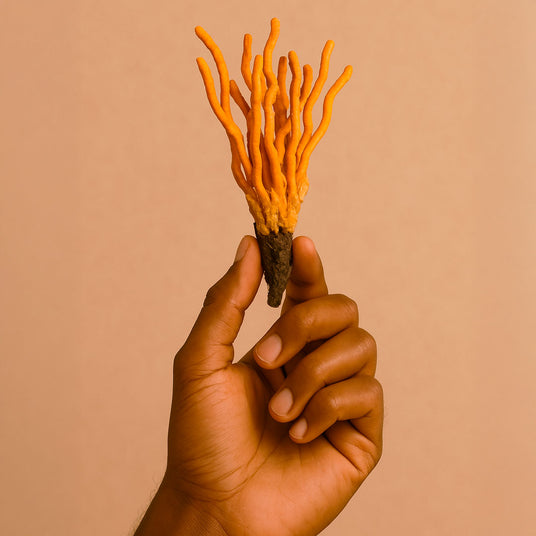
ESSENTIAL NOTES ABOUT THIS MUSHROOM
Cordyceps is an acquaintance fungus rich in natural active biomolecules such as beta-glycanos, Ergosterol Provitamin D, essential amino acids, linoleic and linolenic acid. Highlights its high content in CORDYPIN and, next to Corddictpic acid and the adenosinewhich contains cordyceps, they make it a cocktail Unique with high functional value and of great scientific interest. The numerous traditional uses of this fungus have led science in general, and our R&D equipment In particular, to study it intensely.
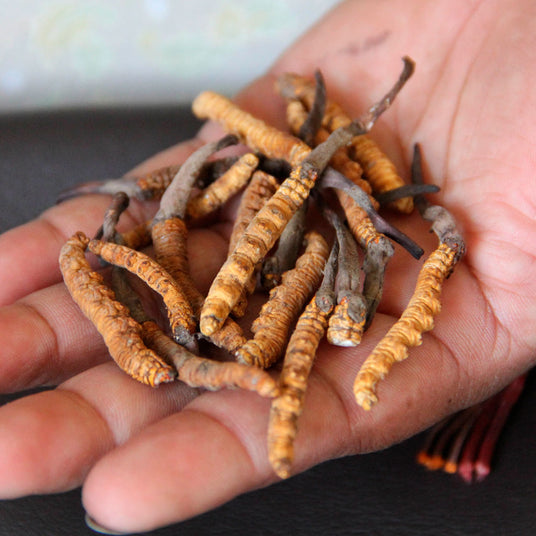
DOCUMENTED USES OF CORDYCEPS
C. sinensis is not a common mushroom that can be eaten like Boletus or Shiitake. It is consumed like Reishi or Mico-Cord), in powder form (Cordy-Sin Sport) or dehydrated and ground, as it has a very hard consistency. It is traditionally used as a condiment in soups, meat fillings or as an addition to stews and vegetables.
Quality and purity
Like other pure mushrooms, Cordyceps powder (Cordyceps Vital) can also be prepared as an infusion and/or used in healthy drinks such as smoothies. However, the highest concentration of active ingredients in Cordyceps is found in its extract, which can be obtained using sustainable technologies without denaturing its compounds, thus concentrating the active biomolecules in its composition. This is the case with HIFAS-Equilibrium, which contains pure biofermented extract of C. sinensis, among other species.
Products with cordyceps
-
Cordy-Sin Sport (Cordyceps Powder and Extract capsules)
HELP YOUR TRAINING
£34.00Unit price /Unavailable -
Cordyceps Vital Powder Superfood
THE BENEFITS OF THE ENERGY MUSHROOM
£26.00Unit price /Unavailable -
Mico Cord (Cordyceps Extract) Capsules
THE MOST CONCENTRATED CORDYCEPS ON THE MARKET
From £54.00Unit price /Unavailable
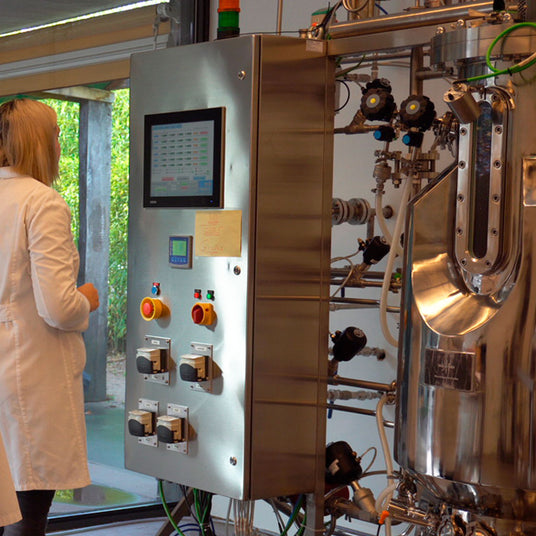
CORDYCEPS CULTIVATION
Thanks to scientific research, it is possible to cultivate a certain strain of cordyceps in bioreactor. This cultivation system allows its production in a completely natural liquid substrate from which the cordyceps mycelium is obtained, whose wealth in active biomolecules is like that of the wild carpophore.
Do you want to know more?
Habitat and distribution
Habitat and distribution
Cordyceps is only found in Highlands of the Himalayas, limited to an altitude of between 3000 and 5000 meters. Therefore, it is mainly in the Tibet and in parts of Bután, China and Nepal. C. sinensis It never appears in clusters, but always alone and exclusively in ORUGAS. Partly to the great demand for copies collected in the wild and its geographical restriction, the cordyceps continues to be marketed today at very high and sometimes heavy prices in gold. As wild specimens are marketed by weight, collectors sometimes have the unfortunate trend of shaking with strange substances, such as lead or other heavy metals. If this is overlooked during subsequent processing, intoxication may occur in the worst case. However, fungi collected in a wild are essential in traditional Chinese medicine and enjoy great popularity.
Mycological notes
Mycological notes
Cordyceps sinensis, together with Reishi and Lion's Mane, is one of the most popular natural remedies.com/hongos-medicinales/melena-de-leon-hericium-erinaceus/">Lion's mane, is one of the most popular natural remedies in traditional Asian medicine. According to the volume Wild Edible Mushrooms – Global Outlook on Their Use and Importance for People published by the FAO, this mushroom is ‘eaten’ solely for its nutritional value. It grows naturally on the high plateaus of Tibet and has been harvested intensively for years in areas of China, Bhutan and Nepal. In fact, Cordyceps is hugely important economically, especially in Tibet. Parts of the population are completely specialised in collecting wild specimens and are therefore dependent on the development of the fungus population. It is estimated that the collection and sale of Cordyceps accounts for 20-30% of Tibet's agricultural products.
The culture in bioreactors
The culture in bioreactors
Maximum quality, purity and potency in our production systems
One of thelines of research at Hifas da Terra is focused on the continuous improvement of the cultivation of different species in bioreactors (Reishi, Lion's Mane, Shiitake and Maitake) using certified organic substrates, as well as on the standardisation of the quality of the ingredients of origin to guarantee excellence in the final product developed with each mushroom. Hifas Quality System we identify biomolecules and active ingredients, we carefully select the fungal strains that contain them, we use our own specific analytical systems, and we apply analysis protocols at different stages of production. Thanks to this rigorous system, we offer natural products, supplements and nutraceuticals with the Hifas Quality System guarantee, setting us apart from other products in terms of purity and premium quality.
R&D and cordyceps studies
R&D and cordyceps studies
In Hifas da Terra we carry out studies with all the fungi we grow that evaluate the quality of extracts and their use.
Curiosities
Curiosities
- The cordyceps jumped to the headlines in the 1990s. Thus, the Chinese athletes beat world records in the World Athletics Championship of Stuttgart and the National Games of Beijing. Then the entire world discovered cordyceps as a supplement.
- The «Functional properties» From this fungus they are related to the grazing of Tibet. With the arrival of spring and the first thaws, the shepherds climbed with their cattle to the high areas of the mountains so that they could feed. After ingesting brown grass (cordyceps), yaks, goats and sheep had a behavior similar to that of Épocas of heat.
- Some species of cordyceps (Cordyceps militaris) They also grow in our latitudes. The C. militaris is also produced by biotechnology and, once dry, it is usually added to soups and stews. Its components are very similar to those of C. sinensis. However, to know what they are and their concentration we must acquire quality products with a standardization of active biomolecules.
















